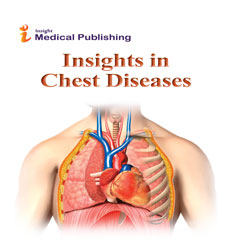Abstract
Hormetic microbiota effect on the gut-based mechanism of metformin benefit.
Metformin is commonly used as the first line of medication for the treatment of metabolic syndromes, such as obesity and type 2 diabetes (T2D). Recently, this compound has gained an increasing interest within the scenario of pro-longevity medicine given also its peculiar increase in AMP-activated protein kinase (AMPK) thus beneficially affecting energy balance by maintaining a proper cellular AMP/ATP ratio through the increase of ATP consumption and decreasing ATP production, which is associated with AMPK activation. The gut microbiota is known to play an important role in harvesting energy from food, metabolic processes and immune modulation. An increasingly body of evidences proves that its composition is significantly associated with obesity, T2D, metabolic syndromes and other chronic diseases. Data show that when metformin is administered to high fat diet (HFD) animals, the composition of the phylum Bacteroidetes significantly increases (over 75%) similar to that in the normal diet-(ND)-fed animals. Moreover, the composition of Verrucomicrobia in the HFDMet group significantly increases, unlike what obtained by simple dietary change applied to HFD. In the HFD-Met group, the abundances of the families Bacteroidaceae, Verrucomicrobiaceae, and some specific Clostridia change significantly vs. those in the HFD and HFD-ND groups. Interestingly, metformin treatment also affects the composition of the gut microbiota in mice fed a ND. The families Rikenellaceae, Ruminococcaceae, and Verrucomicrobiaceae, as well as Alistipes spp., Akkermansia spp., and Clostridium spp., are more abundant in the ND-Met group than the ND group. All this is shedding new light on the AMPK-independent pathway of metabolic improvement by metformin treatment through targeting the microbiota. It is likely that metformin via changes in Akkermansia and lactobacilli bacteria regulation improves the metabolic profile of dietinduced obesity by ameliorating low-grade tissue inflammation and also up-regulating the intestinal expression of several endocannabinoids controlling inflammation, barrier function and peptide secretion in the gut. Till recently, a main hindrance in bacterial stool culture is represented by the major bias that only a few gut bacteria can be properly detected and cultivated in the laboratory. On the other hand, capillary sequencing or PCR-based approaches need culture medium with its inner complexities of multiple separate analyses. In this scenario, a rising star is represented by the next-generation sequencing (NGS) which by combining multiple samples in a sequencing run, is able to analyse the entire microbial community within a sample. Thus, this unique ability enables to catalog resident organisms within the very complex gut poly-microbial bacterial communities to make a DNA-stable sampling and producing a report intelligible to physicians and ideally endowed with a nutritionist and a gastroenterologist commented interplay so to make it a valid diagnostic, a treatment-guided result and a follow up tool as well. This has been quite recently achieved by a spin off dedicated geneticists and biologists (Next Genomics, Prato, Italy) using a kit allowing small and 14-day stable sampling of 0,0001% accuracy. This test is currently used also in clinical center (MMC Milano, Milan, Italy) identifying the enterotype and the presence of bacterial species correlated with diseases.
Author(s): Francesco Marotta
Abstract | Full-Text | PDF
Share this

Google scholar citation report
Citations : 60
Insights in Chest Diseases received 60 citations as per google scholar report
Abstracted/Indexed in
- Google Scholar
- Geneva Foundation for Medical Education and Research
- Secret Search Engine Labs
Open Access Journals
- Aquaculture & Veterinary Science
- Chemistry & Chemical Sciences
- Clinical Sciences
- Engineering
- General Science
- Genetics & Molecular Biology
- Health Care & Nursing
- Immunology & Microbiology
- Materials Science
- Mathematics & Physics
- Medical Sciences
- Neurology & Psychiatry
- Oncology & Cancer Science
- Pharmaceutical Sciences
